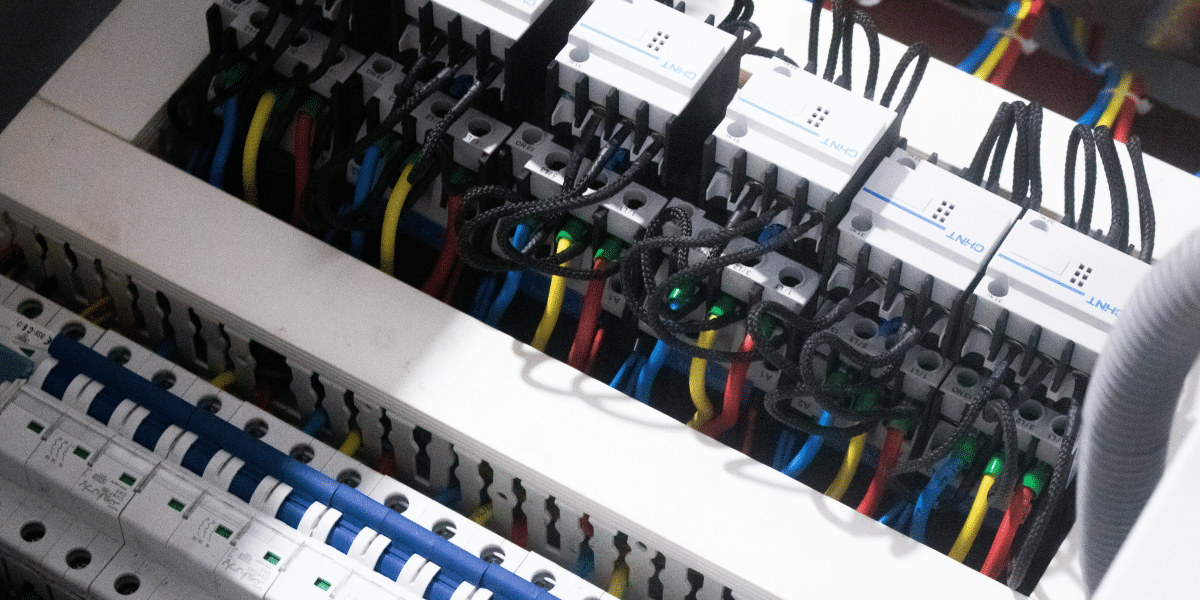Are you a product developer, researcher or marketer striving to create offerings that captivate your target audience?
Consider In-Home Usage Testing (IHUT) as a game-changing approach that uncovers the secrets of consumer behavior and preferences. Explore how IHUT studies empower businesses to maximize product success by informing development with real-world insights.
Understanding IHUT
IHUT is a market research methodology that involves observing consumers using products in their natural environment, typically their homes. This approach provides invaluable insights into real-world usage, preferences, and pain points, enabling companies to refine their offerings before launch.
Two main types of IHUT exist:
In-Home Product Testing: Participants are given a prototype or new product to use in their homes, providing feedback through surveys, interviews, or video recordings.
In-Home Ethnography: Researchers observe participants in their homes, studying their behaviors, routines, and interactions with products in a natural setting.
By leveraging these IHUT testing methods, businesses can gain a deep understanding of consumer needs and expectations, positioning themselves for product success. Furthermore, the rise of digital tools and platforms enhances IHUT’s capabilities by offering new avenues for data collection and analysis.
Why IHUT Studies Are Beneficial
In-Home Usage Tests are useful for companies that want to create products people like. Here are some of the top reasons why IHUTs rocks:
Test Prototypes Early: With IHUT Product Testing, people can try out early product versions at home. This gives you real feedback to improve things before finalizing the product.
Get Genuine Reactions: Unlike stuffy focus groups, IHUTs let you see how people truly react and feel about your product as they use it naturally at home. Their opinions are way more authentic.
Collect Feedback in Cool Ways: You can gather feedback through online surveys, video chats, or in-person visits—whatever works best. Having multiple options helps you get a full picture.
Understand Your Audience Better: Before launching, IHUTs clue whether your target users will like and buy your product. You can make it more user-friendly and appealing.
Keep Tabs Over Time: With IHUTs, you can track how people feel from the early stages to after launch. Adjust as you go based on their changing needs.
Find Willing Testers Easily: People love trying new stuff at home without hassle. IHUTs make it simple to find excited testers.
By conducting IHUT studies, companies can genuinely understand how ordinary people use and feel about their products in the real world. This insider knowledge helps them design, market, and improve products.
Designing an Effective IHUT Program
To maximize the benefits of IHUTs, it is crucial to design an effective program that yields actionable insights. This process begins with carefully selecting the right demographic for testing, ensuring the feedback received is as relevant and insightful as possible.
Key considerations in selecting the appropriate demographic include:
Target Audience: Identifying and recruiting participants who closely represent the intended consumer base for the product under evaluation.
Product Category: Ensuring participants have experience with similar products or fall within the target market segment.
Geographic Location: Accounting for regional preferences and cultural nuances that may impact product perception and usage.
Once the demographic is defined, crafting test protocols that balance structured and unstructured feedback is essential. This approach combines quantitative data from structured questionnaires with qualitative insights from open-ended prompts, enabling a comprehensive understanding of consumer preferences and pain points.
By designing an IHUT program carefully, companies can gather rich, actionable data that informs product optimization and enhances the overall consumer experience.
Analyzing IHUT Data for Product Optimization
With IHUT data in hand, the next critical step is to analyze the findings and identify patterns that reveal consumer preferences and pain points. This process involves sifting through quantitative and qualitative feedback, tracking product performance, and using these insights to make informed decisions.
Techniques for effectively analyzing IHUT data include:
Pattern Recognition: Identifying recurring themes, preferences, or areas of concern across participant responses.
Performance Tracking: Monitoring product usage and satisfaction levels over time to gauge long-term consumer engagement.
Data-Driven Decision Making: Leveraging IHUT insights to inform product design, feature sets, and user experience enhancements.
According to a Food Engineering magazine, iHUT has successfully refined CPG products through real-world testing. By gathering deep insights into consumer preferences and usability, brands can significantly enhance product quality and appeal.
This strategic use of iHUT elevates consumer satisfaction and competitive edge, showcasing its critical role in the successful development and market introduction of CPG offerings.
Integrating IHUT Insights into Product Development
Once IHUT data has been thoroughly analyzed, the next step is effectively incorporating consumer feedback into the product development. This integration involves carefully balancing IHUT insights with existing product roadmaps and strategies.
Key considerations in this stage include:
Feature Set Refinement: Tailoring product features and functionality based on consumer preferences and pain points identified through IHUT.
User Experience Enhancements: Optimizing the overall user experience by addressing usability concerns, improving product instructions, and enhancing intuitive design elements.
Roadmap Alignment: Ensuring IHUT-driven product improvements align with the company’s long-term vision and strategic objectives.
Challenges may arise in managing logistics, ensuring data accuracy, and maintaining participant engagement. However, by partnering with experienced market research firms and leveraging best practices, companies can effectively navigate these hurdles and integrate IHUT insights into their product development efforts.
Leveraging IHUT Feedback for Marketing and Launch Strategies
In addition to informing product development, positive IHUT outcomes can be crucial in shaping effective marketing and launch strategies. By leveraging consumer feedback and testimonials, companies can build trust and anticipation among their target markets, positioning their products as responsive to real-world consumer needs.
Strategies for leveraging IHUT feedback in marketing and launch efforts include:
Leveraging Positive Testimonials: Incorporating favorable consumer feedback and quotes into marketing narratives to reinforce the product’s value proposition.
Addressing Negative Feedback: Developing communication plans and product enhancements to address and mitigate negative feedback received during IHUT.
Tailored Messaging: Crafting messaging and positioning that resonates with target audiences based on their preferences and pain points identified through IHUT.
By effectively harnessing IHUT feedback, companies can create compelling marketing campaigns that resonate with consumers, building anticipation and driving product adoption upon launch.
The Future of IHUT in a Digital-first World
As technology continues to evolve, the landscape of IHUT is also transforming. Digital tools and platforms are reshaping IHUT practices, offering new opportunities for remote monitoring, virtual focus groups, and real-time data collection.
Predictions for the future of IHUT methodologies include:
Internet of Things (IoT) Integration: Leveraging connected devices and sensors to capture real-time usage data and consumer behavior patterns.
Artificial Intelligence (AI) Analysis: Employing AI algorithms to rapidly analyze IHUT data and provide immediate insights, accelerating the product development.
Personalized Marketing Strategies: Utilizing IHUT data to create highly targeted and personalized marketing campaigns tailored to individual consumer preferences.
As these advancements continue to shape the IHUT landscape, companies that embrace digital innovation and adapt their practices will gain a competitive edge in delivering products that truly resonate with their target audiences.
Unlock Product Success With IHUTs
The strategic integration of IHUT (In-Home Usage Testing) presents a transformative approach for navigating today’s competitive market landscape.
Strategic IHUT integrates consumer feedback.
Optimizes products for market success.
Enhances marketing and launch strategies.
Future-proof methodologies with digital tools.
Embrace the power of IHUTs to unlock a world of possibilities for creating products that captivate and delight your target audience, ensuring sustained relevance and success in the dynamic marketplace.
Frequently Asked Questions (FAQs)
What are the primary challenges of implementing an IHUT program, and how can companies effectively navigate them?
Running an IHUT program can be tough sometimes. Common issues are finding the right people to test products, understanding all the data, and fitting feedback into existing plans. The best way to handle these challenges is by working with expert market research companies. They know how to find good testers, collect and analyze data properly, and ensure the IHUT insights are used well.
How can companies ensure that the IHUT feedback they receive is both genuine and actionable?
To get genuine, helpful feedback, it’s important to have a good mix of testers who match your target customers. Asking clear questions through surveys and open-ended chats is also key. Using cool tech like sensors and AI can double-check that the feedback is high-quality and on point.
How can IHUT findings impact the final pricing strategy of a product?
IHUT results can affect a product’s price tag. If testers think a product is better or has more valuable features than others, companies may be able to charge more for it. However, if the product seems average, a lower price might work better and match people’s expectations.
How can companies effectively incorporate IHUT insights into an existing product roadmap?
It takes careful planning, but companies can use IHUT to improve products already in development. The most important thing is to prioritize fixing any big issues or dislikes that IHUT testers point out, even if it means delays or changing the plan a bit. Teamwork between all departments is super important too.
Published by: Holy Minoza










